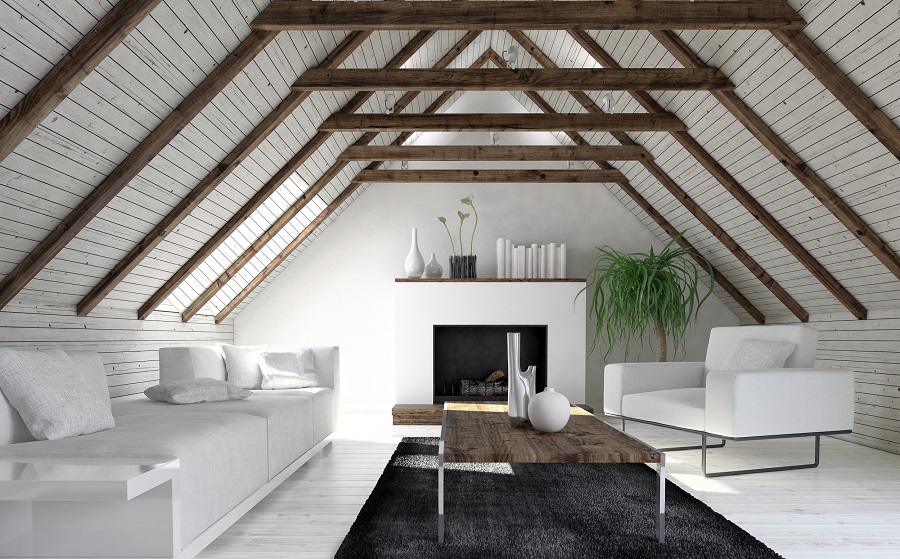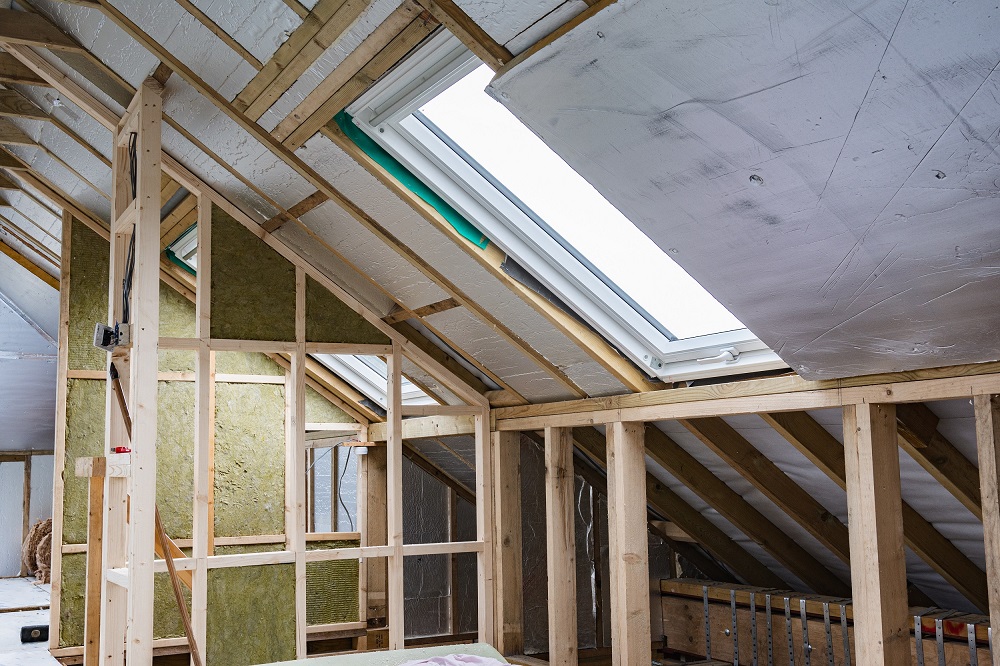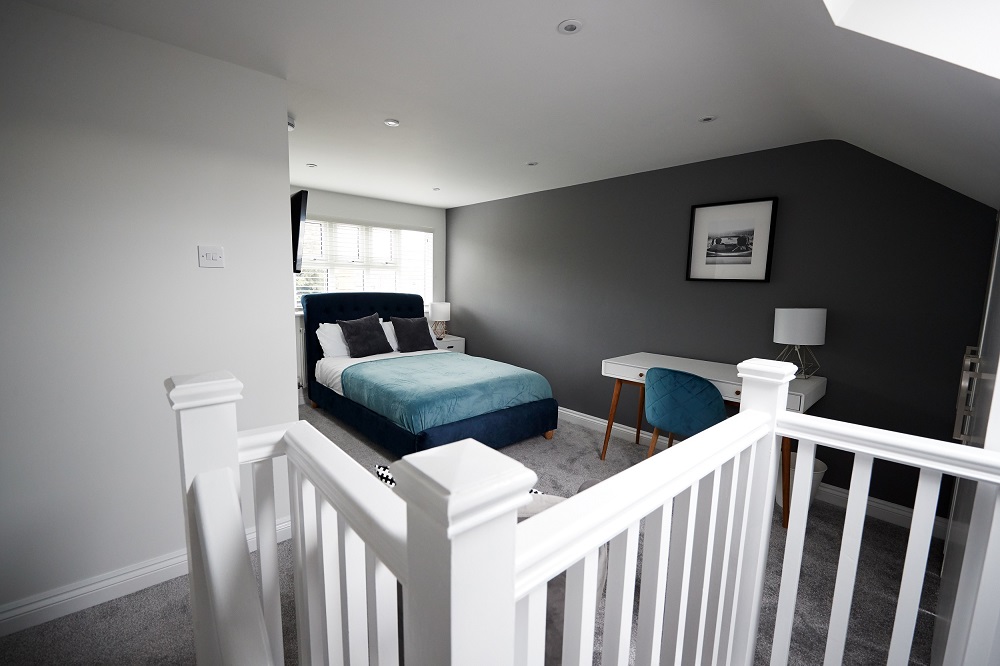
Your loft can be a tricky thing. Although it might offer you great storage space, it may be underused and unloved. For many people, getting the most out of the space they have available is key and one of the best ways to do this is with a loft conversion. Revamping this once closed-off space into a new room, or rooms, can have a wonderful effect on the flow of your home and give you so much more to work with.
If you are considering a loft conversion, or are in the first steps of planning one, discover the five most important things you need to consider before starting.
1. What do you want to use the space for?
First and foremost, you need to think about what you'll actually use the space for. Maybe you're in desperate need of another bedroom, perhaps you are considering inviting an older relative to live with you and want an annexe, or perhaps you just want a more functional storage space?
Whatever it is, this should be at the forefront of your mind when making this decision. If you are unable to think of what you might use the space for, you might not need it. Equally, if you have a very specific plan for the space this will need to be considered in the planning process.
2. How might you use this space in the long term?
Although right now you may want to use this space as a bedroom or living space, something few people do is consider how a renovation might benefit them long term. If you plan to make the room a bedroom for your teenage child, think about what you might want to do with it in a few years when they move out? Or, perhaps you or a family member has limited mobility, in that case, will this be a space that can be accessed easily or will you need to account for that?
It can be easy to think of the short term but with a renovation, the best projects always take into account the long-term picture. Whether this means installing plumbing (even if left unused) for a future bathroom or installing a home lift so you can easily access every level of your house, it can be the decisions we make now that save (or make!) money down the line.
If you aren't sure what allowances you might need to make, talk to a building surveyor about how you can create a dynamic space that will work for you for years to come, as they are sure to have some sage words of advice.

3. How will the conversion work around your day-to-day life?
A loft conversion is no small project and will take around 8–12 weeks in most cases. Although once complete, a loft conversion will open up all manner of possibilities for you and anyone else who lives in your home, it will also cause some disturbance whilst in construction.
With the materials you need being stored around your home, tradespeople coming in and out of your house and the displacement caused by needing to empty the space, you'll likely feel as though you're living on a building site for part of the project.
Although it would be convenient to get the work done with no one in the house, for most people this just isn't an option and day-to-day life needs to continue. So, when you are planning a loft conversion you should ensure that not only do you have the time and resources to make it happen, it won't get too much in the way of your life whilst in progress.
Whether this means you plan it during term time so your children are at school for most of the day, or you take some time off of work so you can be available to let work people in and out and answer any questions they may have is up to you. But it's good practice to work out what you and anyone else in the house will be doing whilst the conversion takes place.
4. Will you need Planning Permission, and what regulations might impact you?
Most people will not need Planning Permission when doing a loft conversion. However, if you live in a listed building or a specific area, you may need to seek it out. If you aren't sure or just want to feel 100% confident before starting (which is advisable) you can speak to your local authorities or a qualified surveyor to ask.
As well as Planning Permission, you'll need to consider Building Regulations, which impact a lot more developments. Even if you don't need Planning Permission, you'll likely need to get approval that your project conforms to building regulations.
As well as that, for homes that are attached to another building, you'll need to think about Party Walls Regulations. This is to prevent anyone who might share one of the walls being affected by the build, so if you live in a terrace house, you'll have to talk to both neighbours. They will then have to either approve or dispute the build. You can find out everything you need to know on the Gov website.

5. What furnishings would you like and how will you install them?
Often, interior design is one of the last things we think about when taking on a major building project. However, when carrying out a loft conversion, it should be one of the first. Whether you intend to use your new space as an extra bedroom, an annexe, a living space or just a snug, you may need to account for some of the furnishings you will want up there.
For example, if you are looking to create a new master bedroom, how is your king-size bed going to get up there? Will it fit up the proposed staircase, or will it need to be dissembled and taken up beforehand?
Equally, if you are going for something more adventurous like a self-catering annexe, will you need plumbing installed or a kitchen fitted? If so, consider how the cabinets or sink will make their way up to the finished space. It may need to be done whilst the conversion is taking place.
Things to consider before converting your loft:
- What do you want to use the space for?
- How might you use this space in the long term?
- How will the conversion work around your day-to-day life?
- Will you need Planning Permission, and what regulations might impact you?
- What furnishings would you like and how will you install them?
If you are planning a loft conversion, not only can we help with kitchen design in Exeter, but we also stock a large range of building materials and our professionals are always on hand to offer advice.
For more home design and building tips, check out our latest news page.
